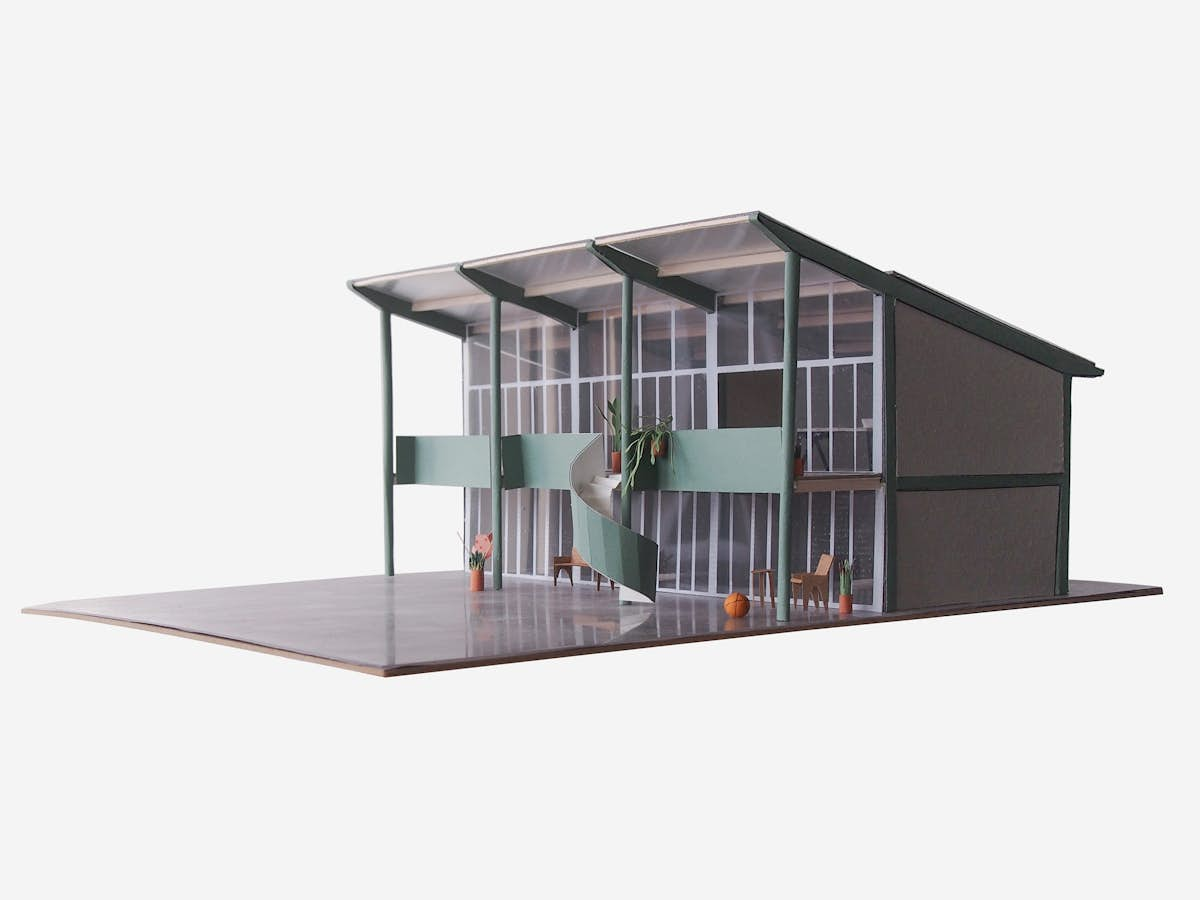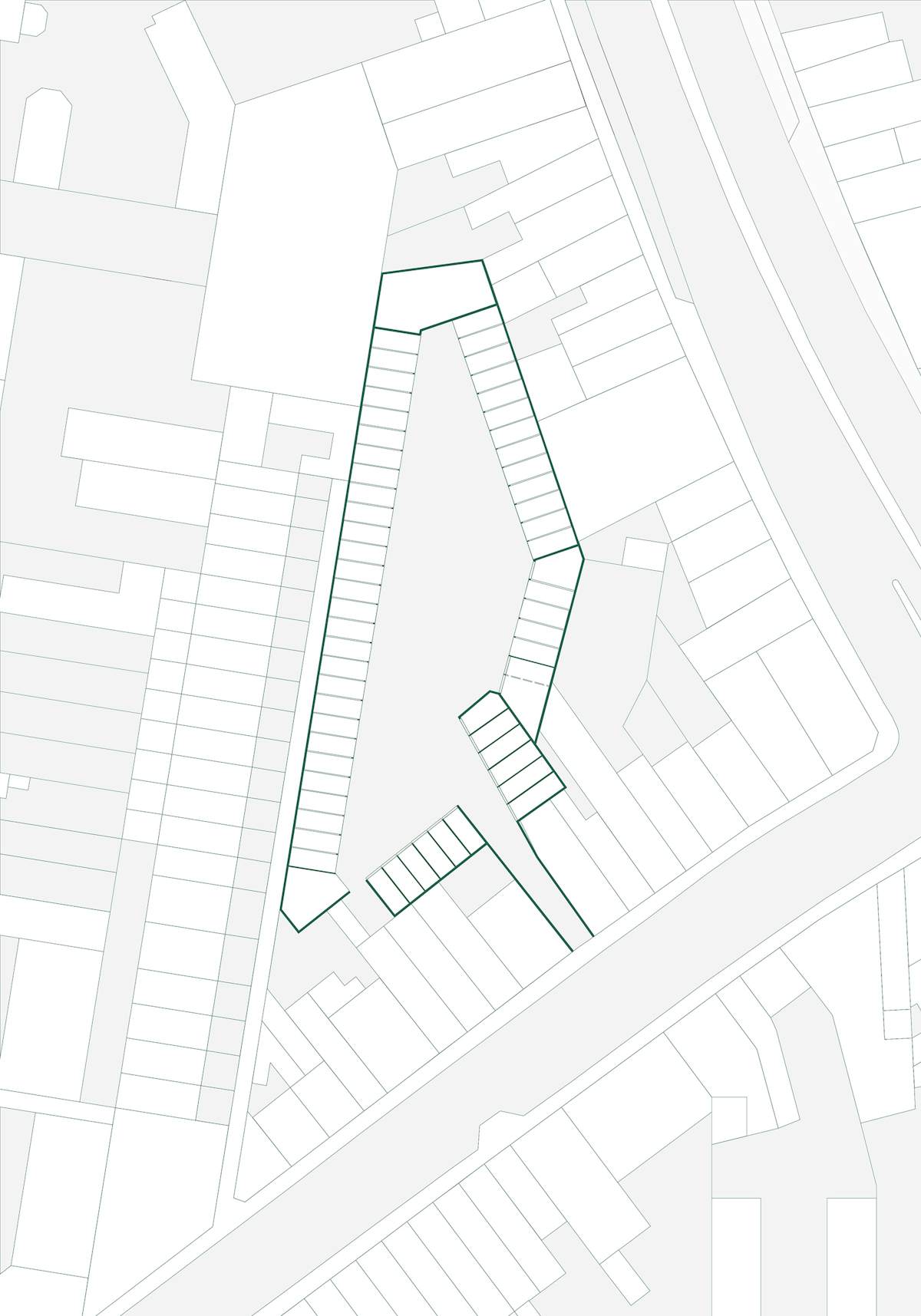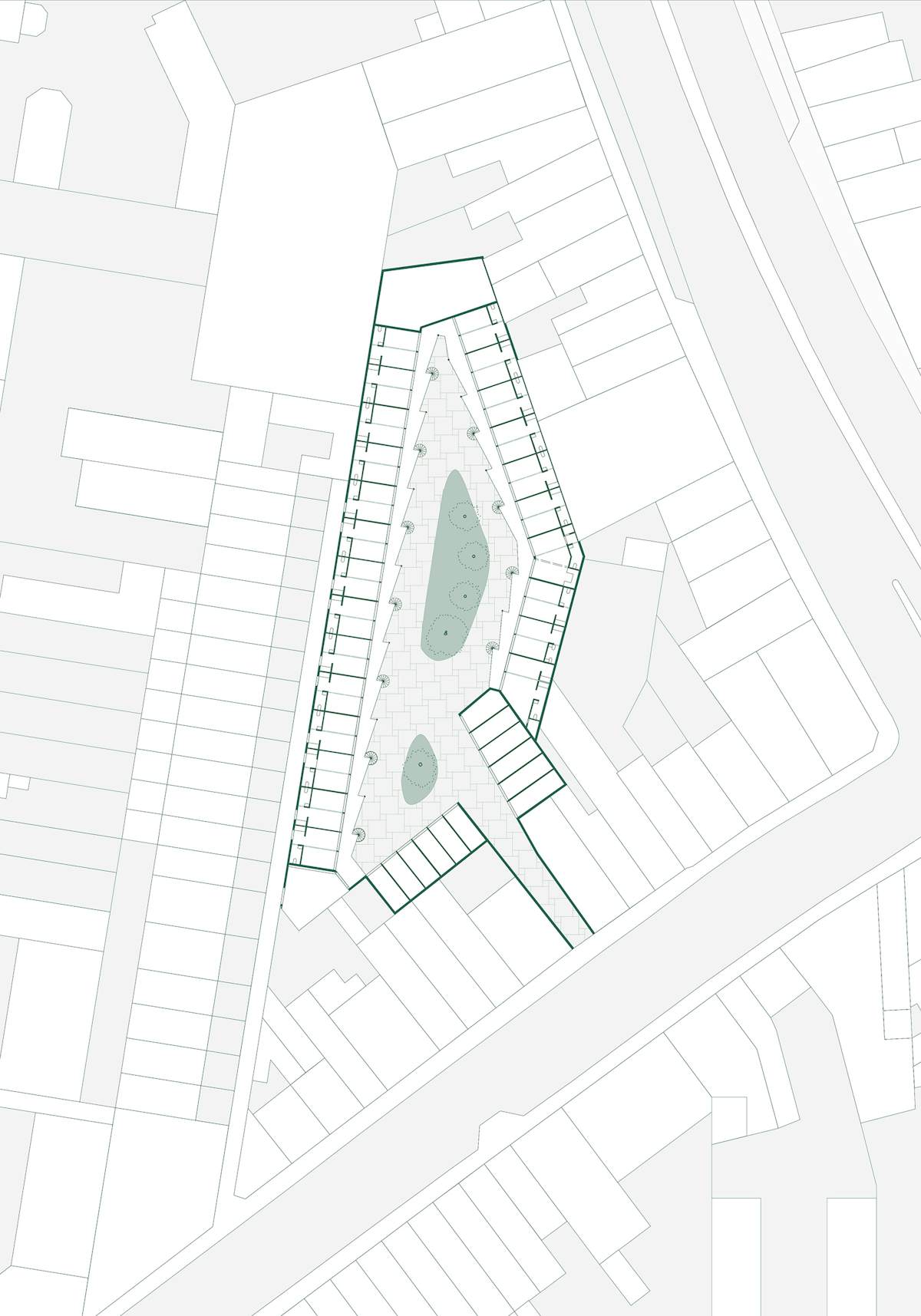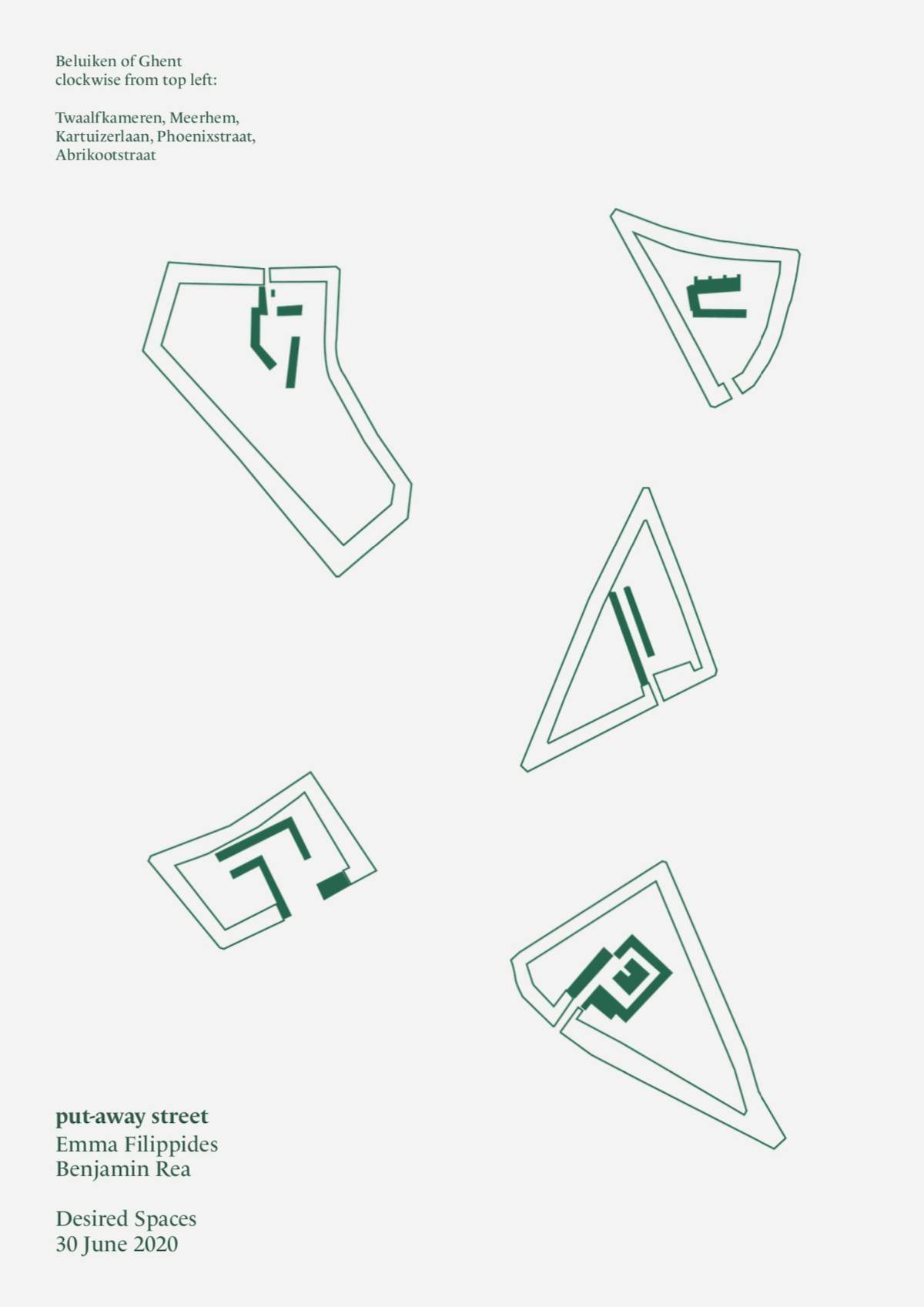Through our ongoing research, Islands in the City, we have been compiling a growing typological archive of social architecture in Ghent. This archive is a critical tool for observing generous spaces, both public and residential. Put-Away Street is a design response to our reflections on the typology of the Flemish beluik.
The beluik is a naturally insertive element into an existing condition, often situated within the core of an urban block. The common yard at the centre of a beluik functions as an urban room, from which the ‘theatre’ of inhabitation can be observed and social interactions enjoyed.
In the midst of the Covid-19 outbreak, we have experienced the city folding in on itself. Suddenly, the domestic interior must simultaneously sustain all professional, caretaking and social activities. For many, especially those without private outdoor space, the doorstep of the home has become an important social space, allowing residents to safely engage in fragments of public life. However, while the doorstep has come to be an important social space, it also signifies the limitations of the domestic interior in post-pandemic society.
Our response is a series of interventions which externalise the doorstep from the home, making use of underutilised parts of the city and allowing them to be reappropriated as work spaces, play spaces, ateliers, greenhouses or social spaces. In the spirit of the beluik, we reappropriate existing garage sites into ‘tuinkamers’ (garden rooms). Tucked away inside city blocks, many of these sites were originally beluiken, demolished and replaced with garages over the last fifty years. Returning to the collectivity of the site’s origins, these interventions are designed as much needed social spaces for local residents.
Following the footprint of the existing buildings, every two garages are converted into a tuinkamer. With a two-storey greenhouse structure built up around the existing single-storey garages, the current density of the site is maintained. Narrow, dark garages belonging to residents are replaced with spacious and flexible tuinkamers with covered porch spaces. The walls separating the garages remain, becoming non-structural divisions within the greenhouse. Each spiral staircase provides access to two tuinkamers on the upper floor, encouraging inhabitation of these spaces and the reduction of overcrowding in the circulation areas. The porches become doorsteps and can be used as small spaces for cultivation, shade and neighbourly interaction.
Like the original beluik, the tuinkamers face inward onto a shared yard. Lights speckle the ground like stage markings, a helpful guide to 1.5m social distance. Both individuated and connected within the intimate yard, residents are able to cohabit in proximity while maintaining necessary levels of distance. The result is a flexible, shared urban room which offers much more to its residents than it takes away.
Emma Filippides / Benjamin Rea
emmafilippides.com




